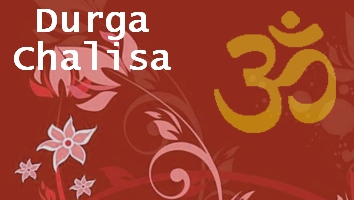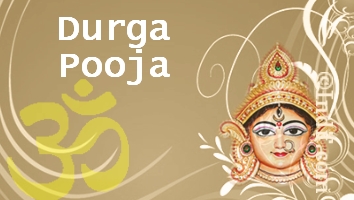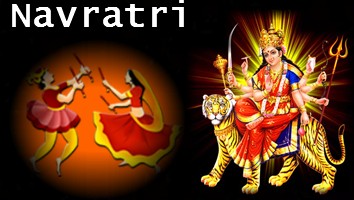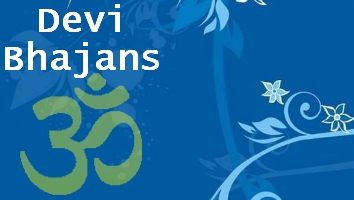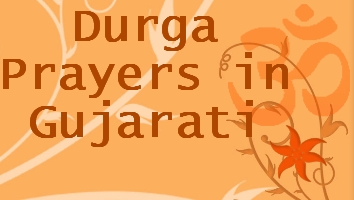Navratri, the Festival of Nine Nights, is celebrated in honor of goddesses Durga, Lakshmi, and Saraswati. The festival is celebrated for nine nights every year in the Hindu month of Ashvin (September-October) although as the dates of the festival are according to the Hindu calendar (which is based on the Moon), the festival may be held for a day more or a day less depending on the calendar. It coincides with the end of the rainy season. This season is considered to be an auspicious one as it is generally associated with the sowing of seeds, and watching new seeds sprout - a sign of prosperity and abundance. Most people consider it the best time of the year to undertake or start new ventures.
This celebration in honour of the goddess, the mother of the world, begins on the first day of Ashvin, and goes on for nine days. The goddess is the personification of Power, or "Shakti". She is known by many names: "Kali", "Laxmi", "Sarasvati", "Chandi-ka", "Durga", "Bhavani", "Ambika", "Ashtabhuja" (eight hands). Her main task is to punish the wicked. She is engaged in war, and weapons are in her hands (four, eight, eighteen...) She is sitting on a lion. Her weapons are the "shul" (pike), "chakra" (wheel), "parshu" (axe) and "talvar" (sword). Kali is known as "Mahisha-surmardini", the slayer of the demon Mahishasur.
The fight against the demon begins on the first day until he is defeated on the ninth day.
Worshipping of Different Goddess :
A different form of the Mother Goddess is worshipped on each day. These nine days are divided and devoted to the Trinity of God worshipped in a female form - three days for Durga (Goddess of Valor) three days for Lakshmi (Goddess of Wealth) and three days for Saraswati (Goddess of Knowledge and Art).
1st - 3rd day of Navratri : On the first day of the
Navaratras, a small bed of mud is prepared in the puja room of the house and
barley seeds are sown on it. On the tenth day, the shoots are about 3 - 5
inches in length. After the puja, these seedlings are pulled out and given to
devotees as a blessing from god. These initial days are dedicated to Durga Maa,
the Goddess of power and energy. Her various manifestations, Kumari, Parvati
and Kali are all worshipped during these days.
4th - 6th day of Navratri
: During these days, Lakshmi Maa, the Goddess of
peace and prosperity is worshipped. On the fifth day which is known as Lalita
Panchami, it is traditional, to gather and display all literature available in
the house, light a lamp or 'diya' to invoke Saraswati Maa, the Goddess of
knowledge and art.
7th - 8th day of Navratri
:
These final days belong to Saraswati Maa who is worshipped to acquire the
spiritual knowledge. This in turn will free us from all earthly bondage. But on
the 8th day of this colourful festival, yagna (holy fire) is performed. Ghee
(clarified butter), kheer (rice pudding) and sesame seeds form the holy
offering to Goddess Durga Maa.
A Universal Festival :
All Hindus celebrate this festival at the same time in different ways in different parts of India.
In the northern part of the country, the first nine days of this festival, called Navaratri, is commonly observed as a time for rigorous fast, followed by celebrations on the tenth day.
People in western India, especially in Gujarat, spend the nine nights of Navratri (nav = nine; ratri = night) in song, dance and merriment. Garba is a graceful form of dance, wherein women dressed in exquisitely embroidered choli, ghagra and bandhani dupattas, dance gracefully in circles around a pot containing a lamp.
In eastern India, especially in Bengal, the Durga Puja is the principal festival during Navratri. It is celebrated with gaiety and devotion through public ceremonies of "Sarbojanin Puja" or community worship. Huge decorative temporary structures called "pandals" are constructed to house these grand prayer services, followed by mass feeding, and cultural functions. The earthen icons of Goddess Durga, accompanied by those of , Saraswati,Ganesha and Kartikya, are taken out on the tenth day in a triumphal procession to the nearby river, where they are ceremonially immersed.
Although, the universal nature of the festival is often found to transcend regional influences and local culture, the Garba Dance of Gujarat, Ramlila of Varanasi, Dusshera of Mysore, and Durga Puja of Bengal need special mention.
Rituals and Celebrations :
The festival of the nine nights is in honour of the goddess, the Divine Power. On the first night the "ghatsthapana" takes place. A vessel of water called "kalash" is put before the image of the goddess, while Vedic verses are recited. During nine days the image of the goddess and the "kalash" must not be touched. This must be accompanied by fasting, or with only one meal a day. An oil lamp must be kept burning throughout. This lamp is called "nandadip". Every day a garland of fresh flowers is tied before the goddess. Near the water vessel some mud is spread and grains are sown. The grains sprout during the nine days. On Dasara day the bunch of tender plants is put on the clothes. �During these nine days the holy book "Durga Saptashati" is read. This book contains the exploits of the goddess. Every day special food is prepared for the goddess. Brahmins, married women and young girls are invited for dinner. At night "arti" is celebrated with great solemnity. In some places it was customary to offer the sacrifice of either a male buffalo, or a goat or a pig.
Mahaastami
The day begins with a recital of Sanskrit hymns of devotees,they offer anjali to the goddess. Kumari Puja or the worship of little girls as the mother goddess is a special part of the rituals observed in a number of traditional and household pujas.
Mahanavami
The festival of Navratri culminates in Mahanavami. On this day Kanya Puja is performed. Nine young girls representing the nine forms of Goddess Durga are worshiped. Their feets are washed as a mark of respect for the Goddess and then they are offered food mainly consisting kala chana, halwa and poori. Then after new clothes or gifts by the worshiper. This ritual is performed in most parts of the country.
Dashami
After the three days of Puja, in Dashami , in the last day, a tearful farewell is offered to the Goddess. Most of the community pujas postpone the farewell as long as possible and arrange a grand send-off. The images are carried in processions around the locality and finally is immersed in a nearby river or lake. Vijaya Dashami is an event celebrated all over the country.



